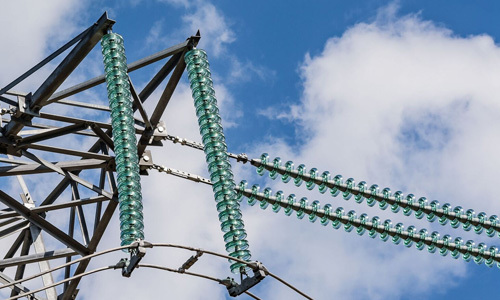Understanding Blue Glass Insulators: The Role of Color in Electrical Insulation
2025-08-14
Blue glass insulators are not just visually striking; they play a crucial role in the electrical insulation industry. These insulators, often found on utility poles and telecommunication lines, serve to protect electrical connections from environmental factors such as moisture, dust, and temperature fluctuations. Understanding their design and function is essential for those working in the electri
Blue glass insulators are not just visually striking; they play a crucial role in the electrical insulation industry. These insulators, often found on utility poles and telecommunication lines, serve to protect electrical connections from environmental factors such as moisture, dust, and temperature fluctuations. Understanding their design and function is essential for those working in the electrical sector or simply interested in the intricacies of electrical systems.
Historically, glass insulators emerged in the late 19th century as a reliable solution to insulating electrical wires. The vibrant blue color of certain glass insulators often aroused curiosity and admiration. This color is typically achieved through the addition of cobalt oxides during the manufacturing process, which not only enhances aesthetic appeal but also provides excellent electrical insulation properties. The unique characteristics of blue glass insulators have made them a sought-after item for collectors, adding to their allure.
From a practical perspective, the primary function of a blue glass insulator is to keep electrical conductors separated from the poles and other conductive materials. This separation is vital for preventing electrical shorts and ensuring that the current flows efficiently through the wires. The durability of glass makes these insulators particularly effective, as they can withstand harsh weather conditions, including heavy rain, snow, and extreme temperatures.
In addition to their functional advantages, blue glass insulators also have a historical significance that cannot be overlooked. Many antique insulators have become prized possessions for hobbyists and collectors, with some rare variants fetching high prices at auctions. This collector's market speaks to the enduring appreciation for these items and their place in the history of electrical engineering.
While the primary purpose of blue glass insulators is to provide electrical insulation, their aesthetic appeal has led to a renewed interest in their use in decorative applications. Many individuals and businesses incorporate these insulators into art projects, home decor, and even jewelry, showcasing the versatility of this once utilitarian item.
In conclusion, blue glass insulators represent a perfect fusion of functionality and beauty in the electrical insulation domain. Their intriguing history, practical applications, and captivating color make them an essential topic for anyone interested in electrical engineering or the evolution of insulating materials. As technology continues to advance, the role of materials like blue glass insulators remains vital, ensuring that electrical systems are safe, efficient, and reliable.
Historically, glass insulators emerged in the late 19th century as a reliable solution to insulating electrical wires. The vibrant blue color of certain glass insulators often aroused curiosity and admiration. This color is typically achieved through the addition of cobalt oxides during the manufacturing process, which not only enhances aesthetic appeal but also provides excellent electrical insulation properties. The unique characteristics of blue glass insulators have made them a sought-after item for collectors, adding to their allure.
From a practical perspective, the primary function of a blue glass insulator is to keep electrical conductors separated from the poles and other conductive materials. This separation is vital for preventing electrical shorts and ensuring that the current flows efficiently through the wires. The durability of glass makes these insulators particularly effective, as they can withstand harsh weather conditions, including heavy rain, snow, and extreme temperatures.
In addition to their functional advantages, blue glass insulators also have a historical significance that cannot be overlooked. Many antique insulators have become prized possessions for hobbyists and collectors, with some rare variants fetching high prices at auctions. This collector's market speaks to the enduring appreciation for these items and their place in the history of electrical engineering.
While the primary purpose of blue glass insulators is to provide electrical insulation, their aesthetic appeal has led to a renewed interest in their use in decorative applications. Many individuals and businesses incorporate these insulators into art projects, home decor, and even jewelry, showcasing the versatility of this once utilitarian item.
In conclusion, blue glass insulators represent a perfect fusion of functionality and beauty in the electrical insulation domain. Their intriguing history, practical applications, and captivating color make them an essential topic for anyone interested in electrical engineering or the evolution of insulating materials. As technology continues to advance, the role of materials like blue glass insulators remains vital, ensuring that electrical systems are safe, efficient, and reliable.
Key words:
Related News
Customers from several countries visited our factory for inspection.
Today, our company welcomed important clients from many countries to visit and inspect our factory. This is a significant milestone for our company's global reach, and a moment to showcase our strength and achievements. We are deeply honored and are full of confidence for the future.
2025-04-27
What are the characteristics of glass insulators?
After vacuum injection, the continuous pulling and extrusion of epoxy glass pulling rods is formed after the glass fibers are impregnated with epoxy resin and cured. The insulators used in overhead lines commonly include pin insulators, disc insulators, suspension porcelain bottle insulators, porcelain cross arms, rod insulators, and tension insulators, etc.
2024-05-22
In one minute, let you understand glass insulators.
Glass insulators are widely used in power systems due to their excellent electrical performance, corrosion resistance, and mechanical strength. Next, let's take a detailed look at their advantages.
2024-05-22



















